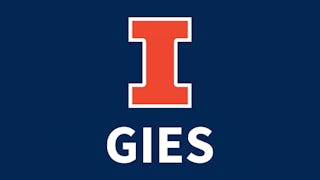This course focuses on applications of optimization methods in portfolio construction and risk management. The first module discusses portfolio construction via Mean-Variance Analysis and Capital Asset Pricing Model (CAPM) in an arbitrage-free setting. Next, it demonstrates the application of the security market line and sharpe optimal portfolio in the exercises. The second module involves the difficulties in implementing Mean-Variance techniques in a real-world setting and the potential methods to deal with it. We will introduce Value at Risk (VaR) and Conditional Value at Risk (CVaR) as risk measurements, and Exchange Traded Funds (ETFs), which play an important role in trading and asset management. Typical statistical biases, pitfalls, and their underlying reasons are also discussed, in order to achieve better results when completing real statistical estimation. The final module looks directly at real-world transaction costs modeling. It includes the basic market micro-structures including order book, bid-ask spread, measurement of liquidity, and their effects on transaction costs. Then we enrich Mean-Variance portfolio strategies by considering transaction costs.

Enjoy unlimited growth with a year of Coursera Plus for $199 (regularly $399). Save now.

Optimization Methods in Asset Management
This course is part of Financial Engineering and Risk Management Specialization



Instructors: Garud Iyengar
11,272 already enrolled
Included with
(43 reviews)
Recommended experience
Skills you'll gain
Details to know

Add to your LinkedIn profile
18 assignments
See how employees at top companies are mastering in-demand skills

Build your subject-matter expertise
- Learn new concepts from industry experts
- Gain a foundational understanding of a subject or tool
- Develop job-relevant skills with hands-on projects
- Earn a shareable career certificate

There are 6 modules in this course
What's included
1 video3 readings1 discussion prompt
In this module, we will cover topics related to Mean-Variance Analysis and Capital Asset Pricing Model (CAPM), which is a fundamental theory in portfolio selection. CAPM can be used to price risky assets in the market. We will start by utilizing Mean-Variance Analysis to construct an optimal portfolio in an arbitrage-free market. Then we will introduce the efficient frontier and capital market line. Finally, we use excel to implement Mean-Variance optimization and construct a portfolio with the highest Sharpe ratio. In practice, Mean-Variance Analysis and CAPM can also be extended in other pricing techniques such as factor model. In the assignment, you will be required to apply Mean-Variance Analysis to do portfolio selection, Sharpe ratio computation, and risky asset pricing, etc.
What's included
11 videos1 reading4 assignments
What's included
3 readings2 assignments1 discussion prompt
In this module, we show the difficulties in implementing Mean-Variance and provide possible methods to improve the estimated frontier by revising constraints and amending parameter estimation. VaR and CVaR are introduced as different measurements about risk beyond variance. In the second lesson, we will also learn common ETFs and their returns and volatility. ETFs play an important role in trading and asset management because of their features at low costs, tax efficiency, and stock-like behaviors. In the last lesson, we will introduce some facts about typical statistical biases and pitfalls, as well as underlying reasons. This can remind us to be more careful when doing the statistical estimation. If you have any questions, you should reach out to us on the discussion forum.
What's included
12 videos1 reading5 assignments
What's included
3 readings4 assignments
In the real world, transaction costs are charged when we buy or sell assets in the market. How to model transaction cost is a key question in portfolio execution. In this module, we learn about the basic market micro-structures, including order book, bid-ask spread, measurement of liquidity and their effects on transaction costs. Then we enrich Mean-Variance portfolio strategies by taking transaction costs into consideration. By learning this module, you will be better prepared to deal with real-world investment problems.
What's included
7 videos1 reading3 assignments
Earn a career certificate
Add this credential to your LinkedIn profile, resume, or CV. Share it on social media and in your performance review.
Instructors



Offered by
Explore more from Finance
 Status: Free Trial
Status: Free TrialUniversity of Illinois Urbana-Champaign
 Status: Free Trial
Status: Free TrialUniversità di Napoli Federico II
 Status: Free Trial
Status: Free TrialRice University
Why people choose Coursera for their career




Learner reviews
43 reviews
- 5 stars
83.72%
- 4 stars
11.62%
- 3 stars
0%
- 2 stars
2.32%
- 1 star
2.32%
Showing 3 of 43
Reviewed on Mar 4, 2022
It would be nice if more reading materials or reference can be pointed to, for example, specific chapters of a book or a specific paper, or lecture notes.
Reviewed on Feb 6, 2023
hi there As a finance Master graduate and an employee of the banking industry, I learned many new things from this courseThanks a lot
Reviewed on Jan 20, 2022
The course overall is good. But the structure is kinda messy, and definitions used in assignments are not very clear sometimes.

Open new doors with Coursera Plus
Unlimited access to 10,000+ world-class courses, hands-on projects, and job-ready certificate programs - all included in your subscription
Advance your career with an online degree
Earn a degree from world-class universities - 100% online
Join over 3,400 global companies that choose Coursera for Business
Upskill your employees to excel in the digital economy
Frequently asked questions
To access the course materials, assignments and to earn a Certificate, you will need to purchase the Certificate experience when you enroll in a course. You can try a Free Trial instead, or apply for Financial Aid. The course may offer 'Full Course, No Certificate' instead. This option lets you see all course materials, submit required assessments, and get a final grade. This also means that you will not be able to purchase a Certificate experience.
When you enroll in the course, you get access to all of the courses in the Specialization, and you earn a certificate when you complete the work. Your electronic Certificate will be added to your Accomplishments page - from there, you can print your Certificate or add it to your LinkedIn profile.
Yes. In select learning programs, you can apply for financial aid or a scholarship if you can’t afford the enrollment fee. If fin aid or scholarship is available for your learning program selection, you’ll find a link to apply on the description page.
More questions
Financial aid available,


